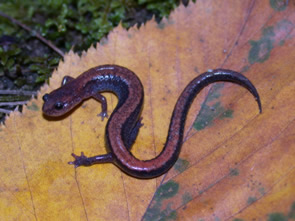
Plethodon cinereus
Photo by JD Willson
Description: There are two distinct color morphs of the southern red-backed salamander. The striped morph has a dark grey or brown base color with an orange or red stripe stretching from the head to the end of the tail. The unstriped morph is uniformly dark grey to brown on the back and sides. The underside of the red-backed salamander has extensive black and white mottling.
Habitat/Range: These salamanders are found in the mountains of northwestern North Carolina, in a small area of the central Piedmont, and in much of the Coastal Plain. These terrestrial salamanders are largely confined to forested areas and may be found under rocks, logs, and other cover objects during the day. Red-backed salamanders reach their highest densities in mature forests with deep, well-drained soil. At night, these salamanders may be found wandering the forest floor in search of food. These salamanders may reduce their surface activity during hot summer months in North Carolina.
Diet: Red-backed salamanders primarily consume a variety of small invertebrates. They have also been known to cannibalize eggs and juvenile salamanders
Reproduction: Red-backed salamanders lay their eggs in underground burrows, leaf litter, or under rocks and logs. The females remain to guard their eggs until hatching and will aggressively defend them from other salamanders. By remaining coiled around their eggs, females also prevent them from drying out. Hatchlings do not go through an aquatic larval stage. Instead, when young salamanders emerge from their eggs they look like miniature adults.
Miscellaneous: Although red-backed salamanders are often extremely abundant and easily discovered, surface active individuals make up only a small part of the population. At any given time, the vast majority of red-backed salamanders are underground. Red-backed salamanders will aggressively defend territories from other salamanders. These salamanders also produce noxious skin secretions to deter predators.

The shaded region represents the range of the red-backed salamander in North Carolina.
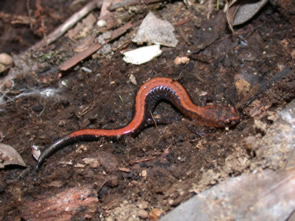
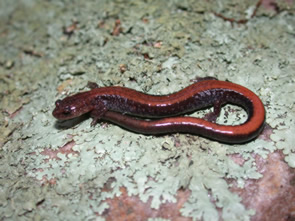
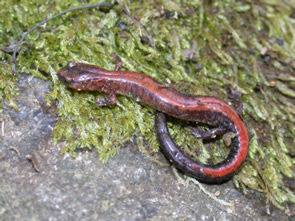
Photo by JD Willson
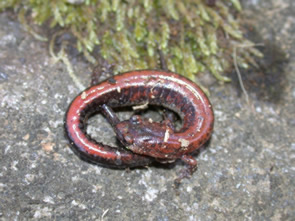
.jpg)
Photo by JD Willson
Photo by Grant Connette
